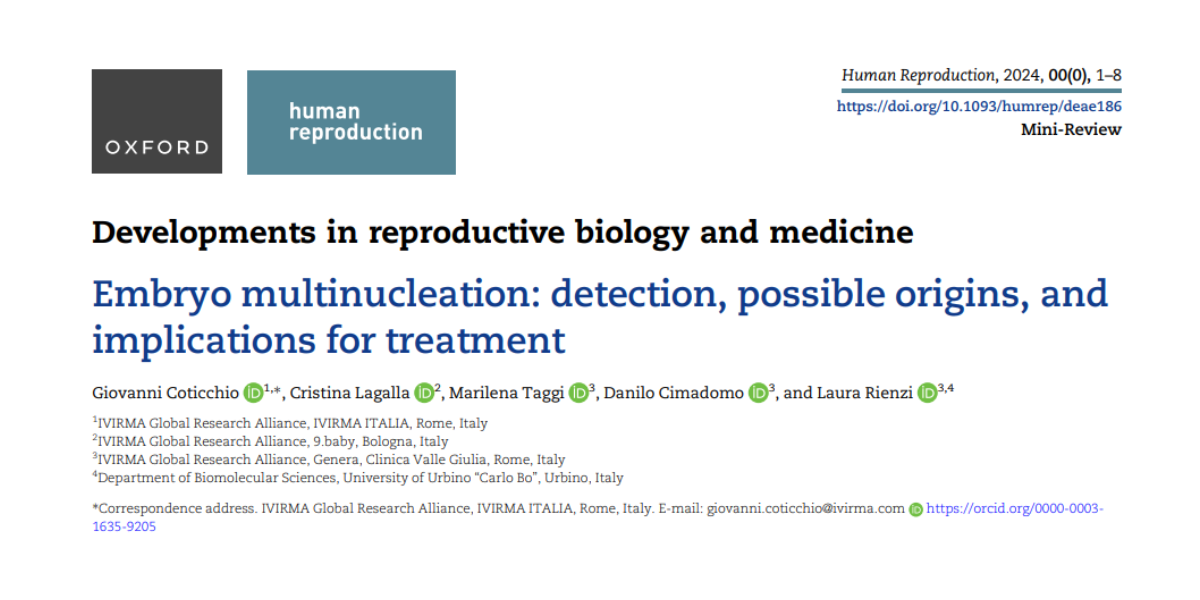
Human Reproduction, 2024, 00(0), 1–8
ABSTRACT
Cell cycle regulation is crucial to assure expansion of a cell population, while preserving genome integrity. This notion is especially relevant to fertilization and early embryo development, a time when the cell cycle transforms from meiotic into mitotic cycles.
Zygote-to-embryo transition is acutely error-prone, causing major developmental perturbations, including cleavage delays, tri- and multi-chotomous cleavages, and cell fragmentation. Another such alteration is bi- and multinucleation, consisting of the simultaneous formation of two or more nuclei at interphase. Indeed, multinucleation affects a large proportion of early human embryos, typically at the two-cell stage. Mechanistically, several factors, including spindle dysfunction, failed cleavage, and cell fusion, may generate this cell anomaly. In assisted reproduction treatment, multinucleation is associated with reduced developmental rates and lower implantation rates in Days 2–3 embryo transfers. However, many multinucleated embryos can develop to the blastocyst stage.
In blastocyst transfers, the current evidence does not suggest a major impact of a previous history of multinucleation on the odds of euploidy or successful treatment outcomes. Human embryo multinucleation remains a not-fully-understood but developmentally relevant and intriguing phenomenon which requires further research of its generative mechanisms and clinical implications.